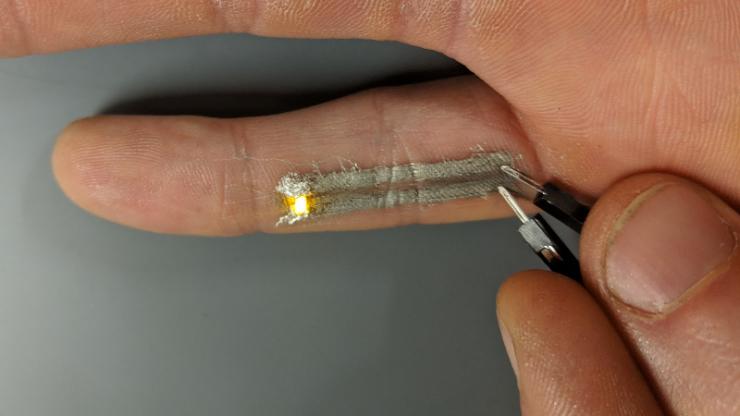A research team at Duke University announced the results of a study on a technology for printing electrical circuits on surfaces that require delicate handling, such as paper and human skin. This technology is expected to improve the technology of inserting a highly adherent electronic tattoo and a biosensor optimized for each patient into the bandage.

The research team has published two papers on the new printed electronics technology. Printed Electronics is a technology that prints semiconductors and circuits on a substrate. According to the research team, the research team believes that printed electronics can print a perfectly working electrical circuit simply by loading materials and blueprints into the printer. It is said that there was a difference from the image generally thought of.
The first thesis is that it developed a new ink for printed electronics. As this new ink contains nanowires, it does not require additional treatment and exhibits conductivity, so even if 50% bending deformation is repeated 1,000 times or more, it maintains electrical performance and dries within 2 minutes after application.
The next paper is to print a transistor that functions by combining new inks and other printables. This technology first prints a semiconductor strip made of carbon nanotubes at the bottom. When the semiconductor strip is dried, it is printed to connect the silver nanowire conductors near the edge of the semiconductor strip, an insulating layer is printed on the semiconductor strip, and the transistor and the silver nanowire conductors are connected and printed.
In the video, you can see silver nanowire wires printed on the skin of the palm of the little finger. Later, when the LED is attached to the end of the silver nanowire, the LED turns on. In addition, the finger is bent, stretched, and the energization continues.
With the existing technology, in order to print circuits on the skin like this, additional processes such as washing unnecessary materials were required. However, the technology developed this time does not require such a process, and the temperature required for treatment is lower than that of the existing technology. The research team said that this announcement will be the first technology that fits the printed electronics that people imagine. Nurses are one step closer to implementing a technology such as printing a biosensor suitable for patients on the spot on a bandage in the future. It is said that it will be. Related information can be found here .


















Add comment